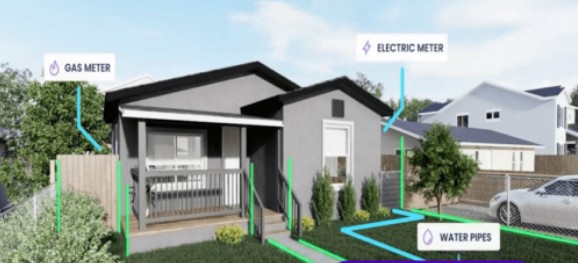AA feasibility study is one of the most crucial steps in the home building process. It helps to ensure that your proposed Tiny Home or ADU complies with city zoning regulations, avoids extra hidden costs, and has no restrictions that may arise during the construction. The Preliminary Feasibility Study, also known as PFA, will help determine your ADU project’s feasibility, including the potential costs, time frames, and return on investment.

Conducting a feasibility study before building an ADU or tiny home can save you from potential setbacks and unexpected expenses.
Are you a New England homeowner looking to build an Accessory Dwelling Unit (ADU) for rental purposes and generate extra Income? Are you aware of the importance of conducting a feasibility study before starting the building process? Are you concerned about the financial and zoning viability of your ADU project? Are you interested in maximizing your ROI and Rental Income from building an ADU on your property?
If you answer yes to one or more questions, you are in the right place. Below we’ll provide valuable information on ADU zoning and the benefits of conducting a Preliminary Feasibility Report or PFA from 5 Day Tiny before you embark on your ADU journey.
What’s a Feasibility Study?
A feasibility study is one of the most crucial steps in the ADU building process. It helps toensure that your proposed ADU complies with city zoning regulations, avoids extra hidden costs, and has no restrictions that may arise at the building time. The Preliminary Feasibility Study, also known as PFA, will help determine your ADU project’s feasibility, including the potential costs, time frames, and return on investment
Get your feasibility study
You can take the first step towards building your ADU by contacting us to schedule a professional feasibility study with our experts at 5 Day tiny. We perform a Preliminary Feasibility Study or PFA as an integral part of our standard procedures for every customer. The benefits of our PFA are a great way to identify any potential problem that may arise later in the process and help us identify the best ADU options to ensure maximum ROI, Secure 100% Financing, and guaranteed rental Income. Our Home Solutions Experts will help you review the proposed project and provide the information you need to make an informed decision before starting the process. Whether you’re a seasoned real estate investor or a first-time property owner, a feasibility study is an essential step in the ADU building process, and we can help you with that.
To ensure that your proposed ADU complies with the city’s or town zoning regulations, it’s essential to research the regulations in detail. You may find information on the city’s website, by contacting the planning department, or by consulting with a local architect or contractor.
The basic zoning rules for Tiny homes and Accessory Dwelling Units (ADUs) vary depending on the specific zoning regulations of each city within the county. However, ADUs are generally considered secondary residential units built on the same lot as a single-family home. Some of the most common zoning rules for ADUs to be aware of if you’re thinking of building a granny flat or casita on your property include the following:
- Size restrictions: There are usually restrictions on the size of ADUs, with maximum square footage requirements ranging from 150 to 1,200 feet.
- Setbacks: There may be requirements for minimum setbacks from property lines, which determine the minimum distance that an ADU must be built from the lot’s boundaries. Read our ADU Setbacks Guidelines Blog to find out more about it!
- Parking: Most cities require that a certain number of off-street parking spaces be provided for each ADU. This can waived if there is some type of public transportation (a bus stop, or trolley station, for example) less than 0.5 miles of walking distance.
- Utilities: The ADU must have its own separate utilities, including water, sewer, and electricity.
- Occupancy: ADUs are typically limited to housing a single family, defined as a maximum of two people who are not related by blood, marriage, or adoption.
- Accessory use: ADUs must be considered an accessory use to the primary single-family home and cannot be used as a vacation or short-term rental, depending on which area of California the ADU it’s located.
- Rent control: Some cities have rent control laws that apply to ADUs, which limit the amount of rent that can be charged for the unit. Or licensing for an Air Bnb.
It’s important to note that these rules can vary significantly from one city to another. It’s recommended to check with the local planning department for the specific regulations that apply to your area before building an ADU, as failure to comply with the rules can result in fines, legal action, or the need to modify or remove the unit. Still, luckily our ADU experts at 5 day tiny can guide you through the entire process, from conducting the initial feasibility study (PFA) to funding your project with 100% ADU Financing, to design, architectural drawings, and permits to construction.
In conclusion, a preliminary feasibility study or PFA is crucial in the ADU building process. It helps to ensure that your proposed project complies with city regulations, avoids extra hidden costs, and does not have any restrictions that may arise at the time of building. Don’t miss out on the opportunity to make an informed decision and build a successful ADU with 5 day tiny
Contact us to schedule your feasibility study today!


